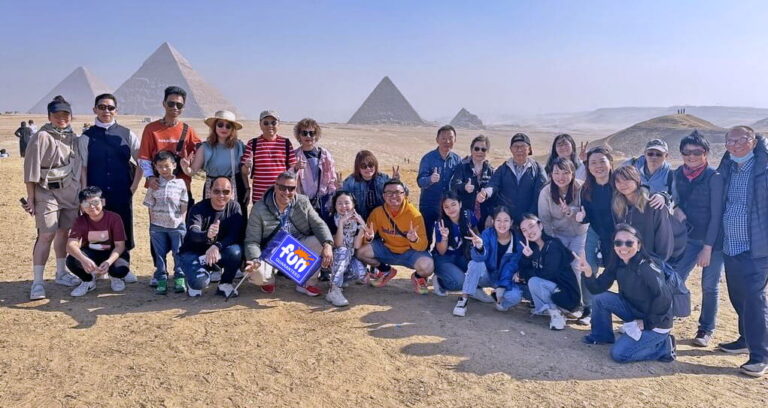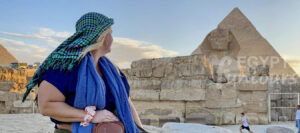The existence of the Nile River, which was one of the factors of the ancient Egyptian economy and its development in many fields, particularly agriculture, the abundance of stones and minerals, which were a component of its industrial renaissance in terms of arts and architecture, and the privileged location and sea coasts made it global commerce, all contributed to ancient Egypt’s economic success.
Ancient Egyptian Economy components

The ancient Egyptian economy consisted of agriculture, industry, and trade. Agriculture was the main pillar of Egypt’s wealth and civilization, one of the most important resources, and a significant source of income for the ancient Egyptians. The Nile is considered the most important factor in the establishment of one of the world’s oldest agricultural civilizations. As a result, agriculture bonded the Egyptians to their motherland. Agriculture instilled in the Egyptians the concepts of unity, arithmetic, and geometry. Ancient Egypt’s farming and production process included the Egyptian farmer, irrigation projects, crops, farming methods and tools, agricultural property, and the involvement of the state – animal husbandry and hunting were all part of the process.
1. Agriculture in Ancient Egypt
The ancient Egyptian economy was built on the back of the farmer, who enjoyed numerous rights. The most significant of these rights was the ability to own and rent land. As a result, the farmer was well-positioned in society. However, farmers were the least affluent and suffered much injustice and tyranny during periods of state weakness. They were influenced by the elders, who would buy their product at a reasonable price after receiving the government’s tax portion. A message from a smallholder of agricultural land urging seriousness and work on his land stated:
Feed the men while they work, take good care of them, and play the whole earth. Work until your ears hurt, see if they are hardworking, and thank the gods because you and I will not have to offend the farmers.
The Importance of the Nile
Egypt’s agriculture has been reliant on the Nile’s waters since prehistoric times. The Nile inundated the area every year, bringing water and rich silt. The Egyptians understood that the Nile River was vital to their survival, so they dug canals, built bridges, and built dams to protect it and arrange irrigation. The farmer’s life was the most significant of all because he established gauges to watch the Nile. He predicted the rise in its water level to estimate the value of taxes and the regions he could irrigate during the year. If the Nile’s flood level rose, he had to drain the water from his property, and if the level dropped, he had to elevate the water to reach his land.
Ancient Egyptian Crops
Pharaonic Egypt was self-sufficient in crops, except during periods of famine and lack of floods. The most famous crops were:
- Cereals: wheat and barley
- Vegetables: onions, garlic, and lettuce
- Pulses: lentils, sesame, and lupine
The Egyptians used flax plants for their fibers in the textile industry. They also grew other plants, including ornamental plants and fruit trees like grapes, dates, and figs. They grew sesame for oil extraction. Egypt has been known as a country of good land products since ancient times.
Cultivation Techniques and Farming Equipment
The cultivation process went through several stages after the floodwaters retreated. The government established irrigation projects to achieve an agricultural renaissance, building dams to mitigate the impacts of flooding. Egypt has a history of calmly and strongly dealing with crises and developing emergency plans.
Livestock and Hunting
Egyptians have been known for their love of animal grazing and their compassion for it. A separate crew of trained shepherds was in charge of herding the livestock. Egypt had significant livestock wealth, with the delta being the wealthiest area due to abundant natural pastures.
-
Farm animals and birds: Among the animals, cows took the top rank, followed by sheep and goats. Ducks, geese, hens, and pigeons were among the birds they knew, and they also kept bees. The farmer benefited from the use of animals in agriculture and transportation. Wool, dander, fur, hair, skin, and flesh were also beneficial.
-
Fishing: In Ancient Egypt, there were numerous different forms of fishing.
-
Land hunting: hunting desert animals such as deer and lions. The Egyptians were unconcerned since it was not a means of subsistence, but rather a pastime for the people.
-
Hunting birds: This included hunting quails, birds, and swans, which required little effort. It was a significant source of food, particularly for the impoverished.
Agricultural innovations in Ancient Egypt

Shadouf: It’s a device that an ancient Egyptian came up with during the New Kingdom era as a way to raise the Nile’s water in high regions distant from the flood plain, allowing him to cultivate more than one crop each year.
It has a bucket on one end and can lift one hundred cubic meters of water in twelve hours, enough to irrigate a little more than a third of an acre.
2. Industry in Ancient Egypt

The ancient Egyptians used resources from the land, such as wood, stones, and minerals. They figured out how to use and develop these resources to create a strong industrial society. This was one of the main pillars of their civilization. Egyptian craftsmen often inherited their trade from their fathers and grandfathers and passed it on to their sons. This helped to refine and improve the crafts over generations.
An artisan could practice any skill they chose. Some workers became masters of their craft, especially as they learned the qualities of their raw materials over time. The government collected minerals and provided security for mining operations. The monarchs were proud that they protected employees’ rights and prevented forced labor. Workers received their earnings in the form of in-kind contributions.
Important Ancient Egyptian Industries
Stone industries include the production of sculptures, pots, and coffins, which are among the earliest forms of business. In the pottery industry, they used the silt to manufacture sculptures, pots, and construction bricks, among other things.
Glass Industries: The Egyptians were the first to discover how to make glass from the white sands of the Egyptian desert. Metal industries have been practiced in Egypt since the time of the Pharaohs. The ancient Egyptian also used gold to create jewelry, utensils, coffins, masks, and kings’ crowns, such as King Tutankhamun’s Jewlery and golden coffins.
Silver was used sparingly for producing similar products. For the production of ships, furniture, coffins, and doors, the ancient Egyptians imported fine wood from outside since it was not accessible in Egypt, such as cedarwood from Phoenicia and ebony from Nubia and Puntland. Egypt used papyrus to create paper, and because it was the first and only country in the world to do so, it held a monopoly on this process.
Light boats, baskets, ropes, mats, beds, and paper are all made from papyrus. The ancient Egyptians knew how to weave with flax, wool, and silk. Women spun with wooden spindles, while they used looms, similar to those seen in the countryside today, for weaving.The ancient Egyptians advanced in the skill of tanning leather. Shoes, chairs, media covers, automobile floors, and water tables are the most significant leather items.
3. Ancient Egyptian Trade

A variety of transportation methods allowed the ancient Egyptian economy to thrive. They used the Nile River to transport goods north and south. Large ships sailed the seas, establishing communication and trade with neighboring countries. On land, animals transported goods, and oxen pulled sleds to transport stones. Horse-drawn vehicles were introduced in the New Kingdom.
Government and Trade
The government played a crucial role in promoting the ancient Egyptian economy. They built fortifications along borders to protect trade and secured trade routes from pirates. They also established departments for accounting, customs, and foreign trade. To promote commerce with Nubia, King Senusret III built a canal, and the Sesostris Canal connected the Nile to the Red Sea for trade with Puntland. The government also passed laws to regulate markets and punish crimes like forging contracts or defrauding people.
Domestic and International Trade
Local trade between Egyptian cities was lively, with marketplaces in various towns. The foundation of the ancient Egyptian economy was a barter system based on mutual trust. Egypt’s monarchs developed commercial connections with other countries, including the Levant, Nubia, Punt, and Libya. As Egypt grew into a large empire during the New Kingdom, trade expanded to the Mediterranean islands. Famous trade voyages included King Sneferu’s mission to Phoenicia for cedar wood and Hatshepsut’s trip to the Land of Punt, which brought back exotic goods and animals.
Experience Egypt’s Beauty
Don’t miss out on the opportunity to discover the genuine definition of awe within the portals of Cairo, Luxor, and Aswan. Experience the most beautiful vistas on the planet by embarking on a Nile River Cruise as part of one of our Egypt trip packages.


























